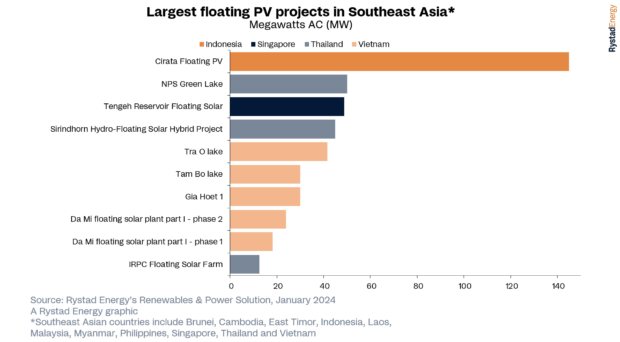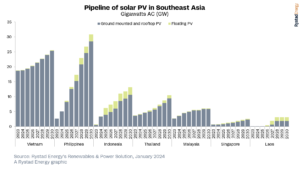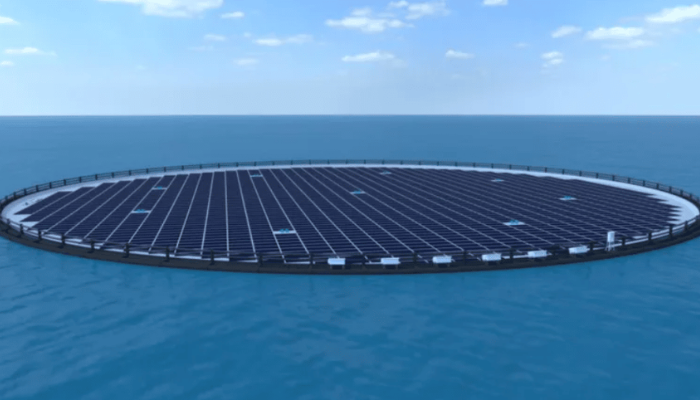The latest report from Rystad Energy said Southeast Asia would account for 10% of the region’s total solar capacity by 2030, encompassing ground-mounted, rooftop and FPV installations. It said floating solar will likely play a critical role in the transition to clean energy in Southeast Asian countries like Thailand, the Philippines, and Indonesia.
The Rystad Energy report highlighted a few points on the impact of floating solar on the overall clean energy capacities in Southeast Asia.
- Land Rights Challenges: Addressing land rights is a significant challenge for solar developers in Southeast Asia, where available land is often used for agricultural purposes. FPVs, being installed on bodies of water adjacent to agricultural areas, solve this challenge by avoiding conflicts over land use.
- Floating Solar Projects’ Scenario: Operational floating solar projects in Southeast Asia total around 500 MW, but an additional 300 MW of FPV capacity is expected to be added in early 2024. The Cirata floating project in West Java, Indonesia, commissioned in November 2023, is the largest floating project in Southeast Asia, surpassing others in China and Taiwan.
- Integration with Hydropower and Modular Design: Floating solar projects are seen as a game-changer in Southeast Asia, allowing the region to maximize its solar resources and overcome limited land availability.

The modular design of floating solar allows for integration with existing hydropower dams, presenting opportunities for hydropower-rich nations like Laos, Thailand, and Indonesia.
- Private Power Purchase Agreements (PPAs): In Thailand, companies contract floating solar and procure electricity through private PPAs, similar to rooftop solar leasing. As per reports, this approach helps address land utilization issues and facilitates a symbiotic relationship between landowners and solar developers.
- Integrating Sustainability and Forest Conservation: Floating solar solves the delicate balance between agricultural needs and expanding renewable energy infrastructure in Southeast Asia. With a significant portion of Southeast Asia covered by rainforests, FPV presents an opportunity to increase renewable energy generation without resorting to deforestation.
Leading Countries in Floating Solar Development: The Philippines, Indonesia, and Thailand are expected to lead Southeast Asia’s push into floating solar in the coming years. The Philippines has many large inland lakes suitable for floating solar, such as Laguna Lake, with plans for nearly three gigawatts-alternating-current (GWac) capacity.

Philippines-based ACEN is set to become Southeast Asia’s top floating solar developer by the end of this decade. The company is working to commission a 1 GW project on Laguna Lake and a 200 MW project in the Filipino province of Rizal.
“Floating solar projects have emerged as a game-changer for Southeast Asia, catalyzing the region’s push towards clean energy by maximizing its abundant solar resources and overcoming limited land availability. Their modular design allows integration with existing hydropower dams and unlocks tremendous opportunities for hydropower-rich nations like Laos, Thailand and Indonesia. Additionally, with land rights a major deterrent facing solar developers in Southeast Asia, as much of the land is used for agriculture, FPVs provide a solution for the coexistence of solar farms and agriculture,” says Jun Yee Chew, head of Asia Renewables and power research at Rystad Energy.

